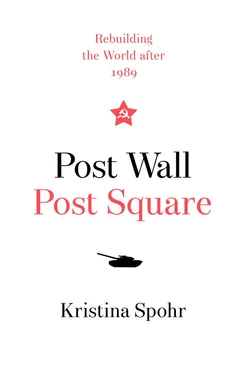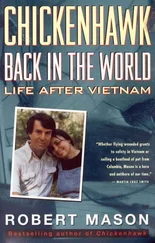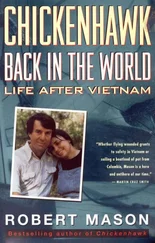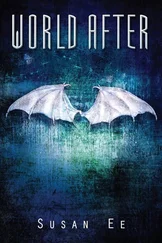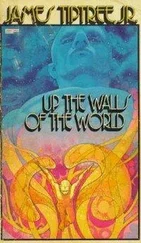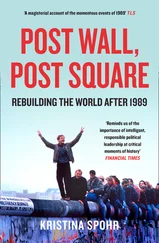Of course this was not what really happened. It was the storyline for NATO’s biennial ‘Wintex’ war game. In the 1989 scenario Germany became the theatre of a ‘limited nuclear war’, which meant instant obliteration for hundreds of thousands of Germans, and radioactive contamination across the historic heartland of Europe condemning millions more to a lingering, agonising death. Worse, the spectre loomed that localised nuclear conflict might ignite the Third World War.
Even before the war game had begun, the Wintex 89 drill narrative had been leaked to the press and then sensationalised in the German and Soviet media. So appalling was the prospect sketched out in the simulation that Waldemar Schreckenberger – the man from the Chancellery chosen to play commander-in-chief ( Bundeskanzler übungshalber ) during the exercise while the real chancellor was busy conducting West Germany’s normal government business – refused to launch the second strike in an effort to curtail the human tragedy. As a result, Wintex 89 was prematurely aborted. There would be no more NATO Wintex drills in the future.
At the beginning of 1989 the Western defence establishment still took seriously the prospect that the long superpower confrontation might climax in a global nuclear holocaust. Only a few months later, however, the European future looked radically different. The Cold War did indeed come to an end in a rapid and unexpected fashion – but not with the nuclear ‘big bang’ for which the two armed camps had spent so much time, money and ingenuity rehearsing.
The war between East and West never did take place; the Cold War denouement was a largely peaceful process, out of which a new global order was created through international agreements negotiated in an unprecedented spirit of cooperation. The two chief catalysts of change were a new Russian leader, with a new political vision, and popular protest in the streets of Eastern Europe. People power was explosive, but not in the military sense – the demonstrators of 1989 demanded democracy and reform, they disarmed governments that had seemed impregnable and, in a human tide of travellers and migrants, they broke open the once-impenetrable Iron Curtain. The symbolic moment that captured the drama of those months was the fall of the Berlin Wall on the night of 9 November.
In 1989, everything seemed in flux. Currents of revolutionary change surged up from below, while the wielders of power attempted political reform at the top. [2]The Marxist–Leninist ideology of Soviet communism, once the mental architecture of the Soviet bloc, haemorrhaged credibility and rapidly lost grip. Liberal capitalist democracy now seemed like the wave of the future: while the ‘East’ embarked on a ‘catch-up’ transformation in Western Europe’s image, the world appeared set on a path of convergence around American values. There was talk of ‘the end of history’. [3]
Nothing had prepared international leaders for such swift and all-encompassing change. For decades they had played war games like Wintex 89. They had never formulated a scenario for a peaceful exit from the Cold War; at worst they just had a fictive military strategy for surviving nuclear Armageddon or, at best, diplomatic tactics for managing a muddled competitive coexistence between two adversarial blocs. They could scarcely have been less prepared for the actual ending that came in 1989–91. This book explores why a durable and apparently stable world order collapsed in 1989 and then examines the process by which a new order was improvised out of its ruins. [4]
In order to understand the paths they took and the decisions they made, I peer over the shoulders of key statesmen, watching them struggle to understand and control the new forces at work in their world. These men (and one woman) explored a range of often-conflicting options in an effort to manage events, impose stability and avoid war. Lacking road maps or shared blueprints for a future world order, they adopted an essentially cautious approach to the challenge of radical change – using and adapting principles and institutions that had proved successful in the West during the Cold War. This was undoubtedly a diplomatic revolution, but conducted – paradoxically perhaps – in a conservative manner.
The leaders involved were a small, interconnected group. In Europe, the triangle that particularly mattered was formed by the Soviet Union, the United States and the Federal Republic of Germany: on one level, the political leaders – Mikhail Gorbachev, George H. W. Bush and Helmut Kohl; [5]on another their foreign ministers – Eduard Shevardnadze, James Baker and Hans-Dietrich Genscher. [6]It was within these fields of force that post-Cold War Europe was shaped. On the margins were two potent but increasingly isolated figures: Margaret Thatcher in Britain, who opposed the rapid unification of Germany, and the French president François Mitterrand, who reluctantly participated on the condition that a united Germany must be deeply embedded in Europe. [7]Their interactions with Kohl, especially over the project of European integration, formed a further power-political triangle. [8]
Yet it is a central assertion of my book that we cannot understand post-Wall Europe without taking account of what happened in 1989 on the other side of the world. Under Deng Xiaoping, the People’s Republic of China experienced a dramatically different exit from the Cold War – forever synonymous with the bloodshed in Tiananmen Square on 4 June. [9]China’s gradual entry into the global capitalist economy was therefore counterbalanced by Deng’s determination to maintain the dominance of the Communist Party. This balancing act – so different from Gorbachev’s complete loss of control – moved his country into another orbit. The people power that had played such a central role in Eastern Europe had no analogue here. Deng’s ‘success’ in suppressing it had vast implications that are still being played out in today’s world. So, the European story has to be framed within another, global triangle – itself a continuation of the Sino-Soviet-American ‘tripolarity’ that was emerging in the later stages of the Cold War. [10]
Taken as a whole, these managers of change formed a cohort largely from the same generation, born between 1924 and 1931, with the exceptions of Mitterrand (b.1916) and Deng (b.1904). All of them were marked by the memory of a world at war between 1937 and 1945 and thus shared an acute awareness of the fragility of peace. It is noteworthy that most of them (Kohl and Mitterrand were exceptions) also lost power in 1990–2, so they were never obliged to confront in a sustained way – as political leaders – with the fallout from their actions.
My first three chapters deal with the headline-grabbing upheavals of 1989 – the cutting of Hungary’s Iron Curtain with Austria, the bloodbath in Tiananmen Square, the accidental fall of the Berlin Wall. But the main focus is on what happened in the exhilarating yet alarming era that followed: the era of the post-Wall and the post-Square. The hope that humankind was entering a new age of freedom and sustained peace competed with the dawning recognition that the bipolar stability of the Cold War era was already giving way to something less binary and more dangerous. [11]
The core of the book traces the story of how in 1990–1 the world was reshaped by conservative diplomacy – adapting the institutions of the Cold War to a new era. Although this was led by the West, and particularly by US president George Bush, the Soviet leader Mikhail Gorbachev was also willing to buy into the process as part of an effort to reorient the Soviet Union’s official ideology towards the ‘common’ values Soviet citizens shared with the West. [12]The resulting rapprochement culminated in a brief era of unprecedented cooperation between the US and the USSR. Their collaborative approach to Iraq’s invasion of Kuwait in 1990 was to serve as the centrepiece of what the American president described as the ‘new world order’. Confrontational bipolarity appeared to be metamorphosing into a two-pillar approach to global security, rooted in superpower cooperation within the United Nations and guided by international law. [13]
Читать дальше
